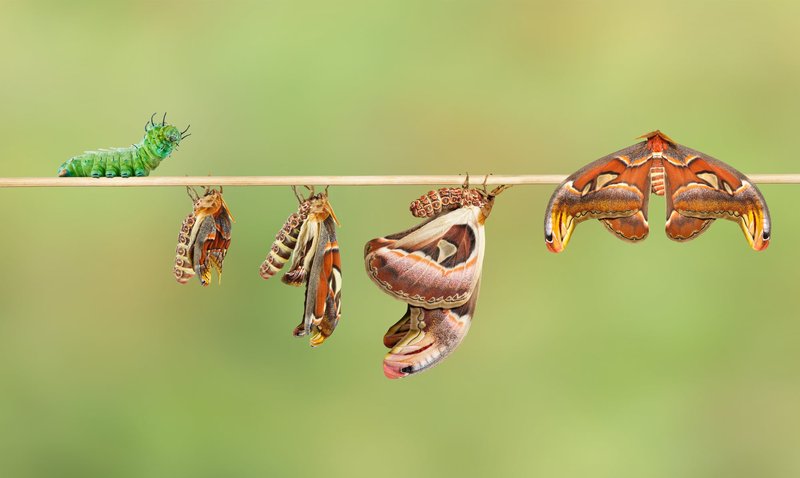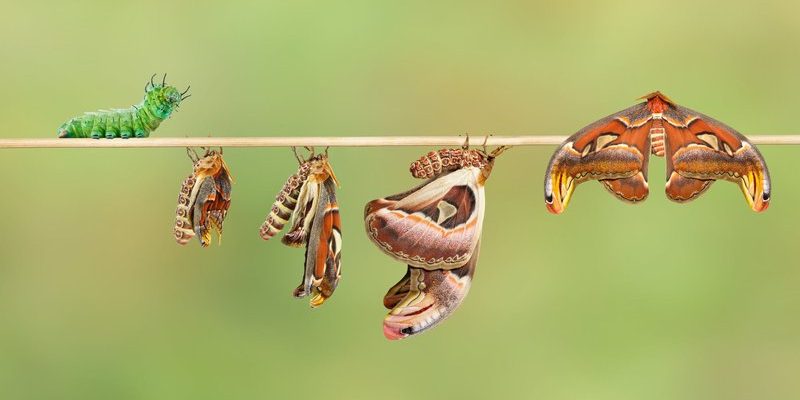
The journey begins with an egg, so small and seemingly insignificant, yet filled with potential. Just like how a seed holds the promise of a towering tree, an Atlas Moth egg holds the future of a magnificent creature. As we dive into the details of each stage, you’ll see just how remarkable these moths are, and why they deserve a spotlight in the enchanting world of insects.
1. The Egg Stage
The life of an Atlas Moth starts as a tiny egg, roughly the size of a pea. These eggs are usually laid on specific host plants that provide the perfect food source for the next stage—caterpillars. A female Atlas Moth can lay anywhere from 100 to 300 eggs at a time. That’s quite a lot, right?
You might wonder why they lay so many. Well, not all eggs will survive due to various predators like ants, spiders, and birds. This abundance is nature’s way of ensuring that at least a few will make it to the next stage. The eggs are often a light green color, blending in with leaves, making them hard to spot for hungry eyes looking for a snack.
In about one to two weeks, conditions are just right, and those eggs hatch. You might be surprised to find out that each little caterpillar, or larva, is ready to chow down immediately. They’re not just cute; they’re hungry!
2. The Caterpillar Stage
Once the eggs hatch, the real adventure begins in the caterpillar stage. These little guys aren’t just munching on leaves; they’re voracious eaters! They primarily feed on plants like the citrus tree and the *cannonball tree*. Picture a feeding frenzy; they devour leaves day and night, growing rapidly. This growth phase typically lasts around 4 to 6 weeks.
As they eat, they go through several molts, shedding their skin to make way for their growing bodies. Each time they shed, they get a little bigger, a little stronger. It’s like leveling up in a video game! By the end of this stage, they can measure up to 4 inches in length, sporting bright, bold colors that can be both beautiful and a warning sign to predators that they might not taste good.
Surprisingly, the caterpillars can also mimic other creatures for protection. When threatened, some even curl up and mimic a twig, making them blend into their surroundings. Clever, right? But no matter how clever, they can’t escape the cycle of life forever, and soon they’ll need to find a safe spot to enter the next stage.
3. The Pupa Stage
Now that the caterpillar is fully grown, it’s time for a transformation into a pupa, often referred to as a chrysalis. This is where the real magic happens. Finding a safe spot, usually on the underside of a leaf or a branch, the caterpillar forms a protective casing around itself. It’s like wrapping up in a cozy blanket for a long nap, except this nap is much more transformative.
Inside this casing, the caterpillar undergoes some wild changes. Its body breaks down, and its cells start to reorganize into something entirely new. This process can take about 1 to 2 weeks, and it’s a crucial time for the Atlas Moth. The pupa’s outer shell may look inactive, but trust me, inside, there’s a lot going on.
During this time, the pupa is particularly vulnerable to predators. Interestingly, the color of the chrysalis can change depending on its environment, providing some natural camouflage while it waits to emerge. Just when you think it couldn’t get more fascinating, the pupa slowly starts to change shape as the wings of the moth begin to develop.
4. The Emergence
Finally, the moment arrives for the moth to break free from its cozy casing! When it’s time to emerge, the pupa splits open, and out comes the adult Atlas Moth. However, it doesn’t immediately take flight. At first, its wings are crumpled and wet, so it needs time to pump fluid into them and allow them to unfold.
This stage can be quite dramatic. The moth hangs upside down for several hours as its wings dry and expand. During this time, it might look a little awkward, almost like a teenager trying out a new outfit. But once those wings are ready, the Atlas Moth is truly a sight to behold, flaunting a wingspan that can reach up to 10 to 12 inches. Imagine a small dinner plate soaring through the air!
The emergence process is not just a physical transformation; it’s a new beginning. This amazing moth is now ready to face the world, find a mate, and start the lifecycle all over again.
5. Mating and Life Span
Once the Atlas Moth reaches adulthood, it’s all about finding a mate. The mating ritual is quite fascinating. Male moths are known to use their large, feathery antennae to pick up scents in the air, searching for female moths that are ready to mate. It’s like a romantic dance in the moonlight, filled with anticipation.
After mating, the female lays her eggs, and the entire cycle begins again. Adult Atlas Moths typically live for about 2 to 3 weeks. It might sound short, but within this time, they’re busy ensuring the next generation can continue their legacy.
Unlike many other moths and butterflies, adults do not eat; they live off the energy stored during their caterpillar phase. This means they don’t need to search for food or worry about finding the right plants! Instead, their main focus is on reproduction, ensuring their remarkable lifecycle continues.
6. The Importance of Atlas Moths in the Ecosystem
You might be wondering, “Why should I care about the Atlas Moth?” Well, these moths play an important role in their ecosystem. They serve as pollinators for various plants, helping to maintain the balance of their environment. Just like bees and butterflies, they contribute to the growth of many flowering plants, which are essential for other creatures, including humans.
Additionally, the Atlas Moth is a vital part of the food chain. Birds, bats, and other mammals rely on them as a source of food. Their presence helps sustain the health of their habitats, making them a key player in their ecosystem.
By understanding the lifecycle of the Atlas Moth, we gain insight into the complexity of nature and the interconnections between species. Preserving such creatures and their habitats is essential for maintaining biodiversity and ecological balance.
7. Conservation Status
Unfortunately, the Atlas Moth faces challenges in the form of habitat loss and environmental changes. As deforestation and development encroach on their natural habitats, their populations are at risk. It’s crucial to raise awareness and take action to conserve these magnificent creatures.
Conservation efforts aim to protect not only the Atlas Moth but also the ecosystems they inhabit. Supporting sustainable practices, reforestation, and habitat conservation can help ensure that future generations can marvel at these giant beauties.
As individuals, we can do our part by advocating for environmental protection and encouraging sustainable practices in our communities. Every small effort counts!
8. Conclusion
The lifecycle of the Atlas Moth is a captivating narrative filled with transformation and survival. From a tiny egg to an impressive adult, each stage of life showcases the wonders of nature. Understanding this remarkable process helps us appreciate the delicate balance of ecosystems and the importance of protecting these unique creatures.
So, next time you spot a butterfly or moth fluttering by, take a moment to think about the incredible journey they went through to get there. It’s a reminder of the beauty and complexity of life, all starting from something as small as an egg. Whether it’s a tiny hatchling or a majestic moth, every stage matters in the grand scheme of nature. Let’s celebrate these little wonders and do our best to protect their homes!

